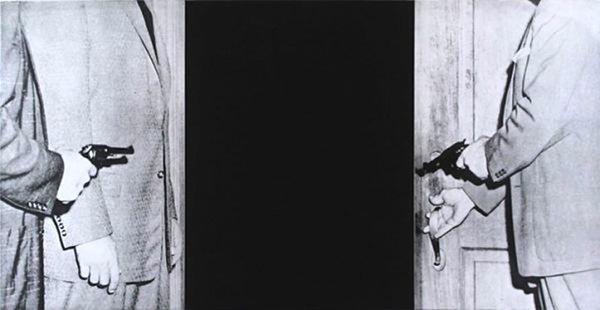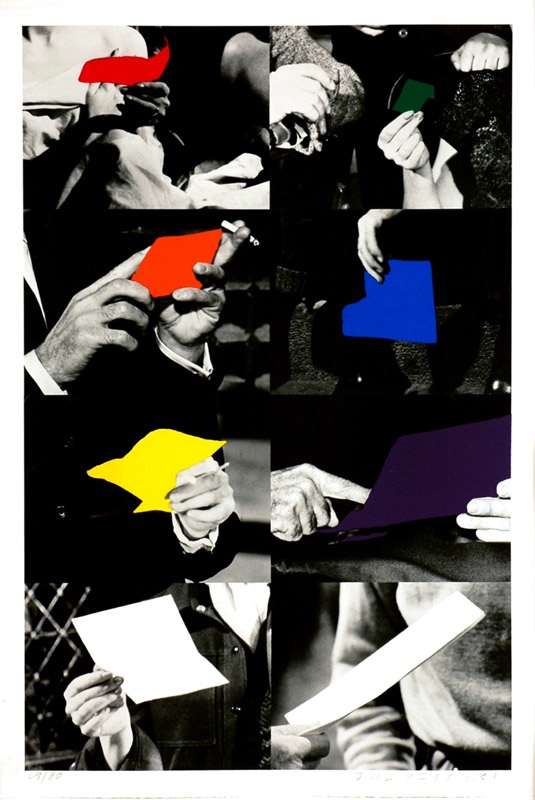 John Baldessari
John Baldessari
Zorro (Two gestures One Mark)
1998
Offset lithograph with screenprint and offset flip book
Sheet: 10 x 8 in.
Book: 3 7/8 x 5 7/8 in.
Edition of 60
Pencil signed and numbered
About the work:
John Baldessari pledged, in a 1970 groundbreaking work “I will not make anymore boring art.” This pledge was addressed to both his viewers but also to himself. He has remained true to his word, never shying away from new media, allowing his works to always retain a freshness and relevance that many younger artists struggle to match. Through his experimentations, he became responsible for the way many artists use appropriation in their work today. Kruger, Sherman and Salle are among the many that cite him as an influence. He is a giant of contemporary art.
This week’s Work of the Week! WOW! is Baldessari’s Zorro (Two Gestures and One Mark).
Zorro (Two Gestures and One Mark) is a lithograph with screenprinting accompanied by an artist flip book without commentary. The combination of the two brings to life trademark Hollywood imagery.
Baldessari is best known for works that blend photographic materials which are taken out of their original context and rearranged. He has spent his entire life living and working in California so it is not surprising that much of his works incorporate Hollywood film stills and other cinematic references. This particular piece features actors Jean-Paul Belmondo and Humphrey Bogart and the character Zorro.
This work requires the participation of the viewer, to take the book and flip it, which in turn reanimates the gestures of Humphrey Bogart and Jean-Paul Belmondo from movie stills. It is not a static piece.
The end result of flipping through the book is the actual artwork of art in which we see the imagery of Belmondo smoking a cigarette, and rubbing his lips with his thumb, Humphrey Bogart laughing before slowly becoming serious, and Zorro marking the Z on a wall with his sword.
Thus the work becomes two-part. The genius of the work is that it is a combination of film stills that the viewer has to flip through the book to get to the end result image, which is the artwork itself. A remarkably smart conceptual piece!





%20stock.jpg)
